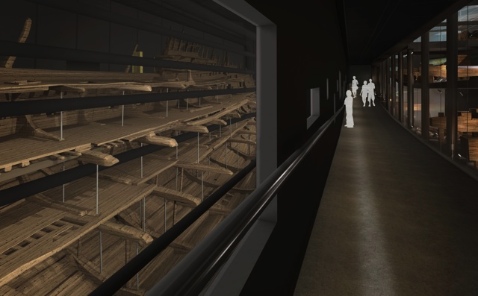December 8, 2011 – The Mary Rose was constructed between 1509 and 1511 in England and served as an admiral’s flagship. After a modification in 1536 as one of the first ships she was able to fire a broadside with her guns and was considered to be one of the most potent ships of the English navy. On 19th July 1545 the Mary Rose sank in the Solent, the strait between the Isle of Wight and the southern coast of England. Of the approximately 700 men aboard only few survived.
Illustration of the carrack Mary Rose by Anthony Anthony as reproduced in The Anthony Roll of Henry VIII’s Navy: Pepys Library 2991 and British Library Additional MS 22047 With Related Documents. Source: Wikipedia.
Although fishermen saw parts of the wreckage in the nineteenth century, only in the 1960s the localization and recovery of the Mary Rose were realized. It was one of the most complex projects of maritime archaeology. The private Mary Rose Trust recovered the ship and over 20,000 artifacts of the Tudor era (among which also 28 gold and ca 180 silver coins). These objects are of great importance for our understanding of the Tudor culture and can be seen in a museum located at Historical Dockyards in Portsmouth.
The future presentation of the Mary Rose. Copyright Wilkinson Eyre Architects.
For the hull a new museum is under construction and will be inaugurated in 2012. There the visitors will be able to look at close range onto the wreckage. But before this will be possible, the extensive work of conservation has to be completed to prevent the wood from taking damage.
Ship Walkway Image 2012. Credit Pringle Brandon.
Very extensive information about the Mary Rose offers the Wikipedia article.
The website of the Mary Rose Museum gives innumerous information at hand: plans, films, images, a virtual museum tour and many more. You should absolutely take a look at this site!







